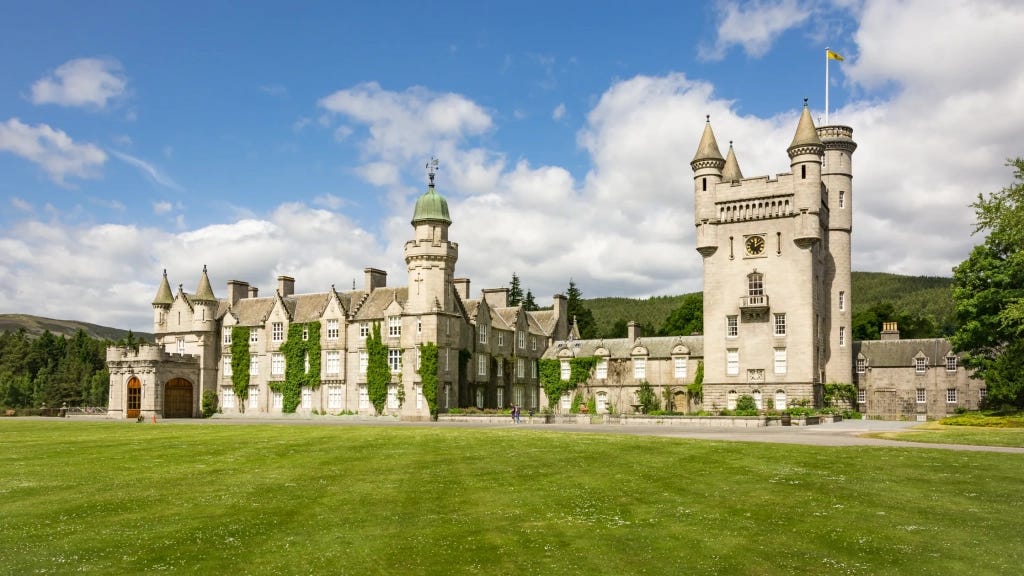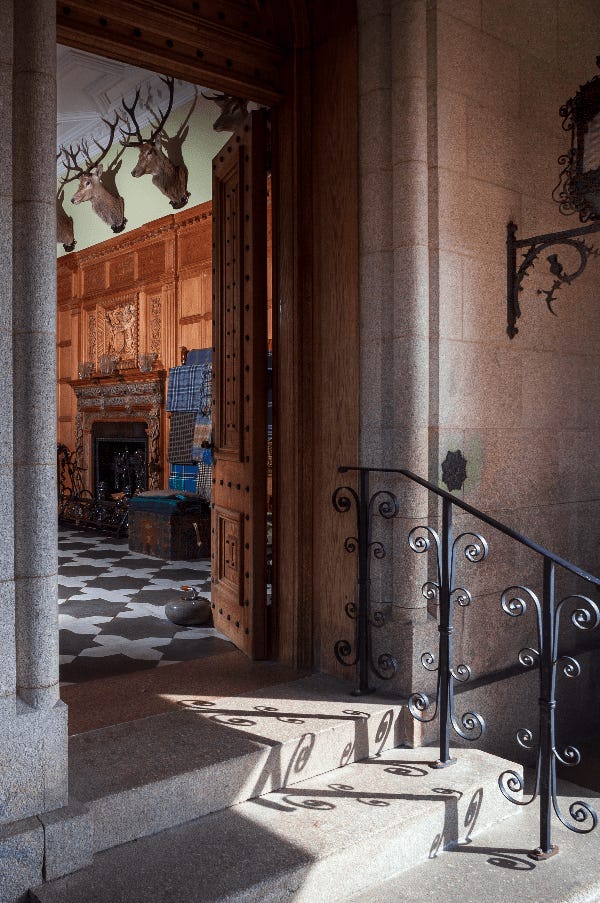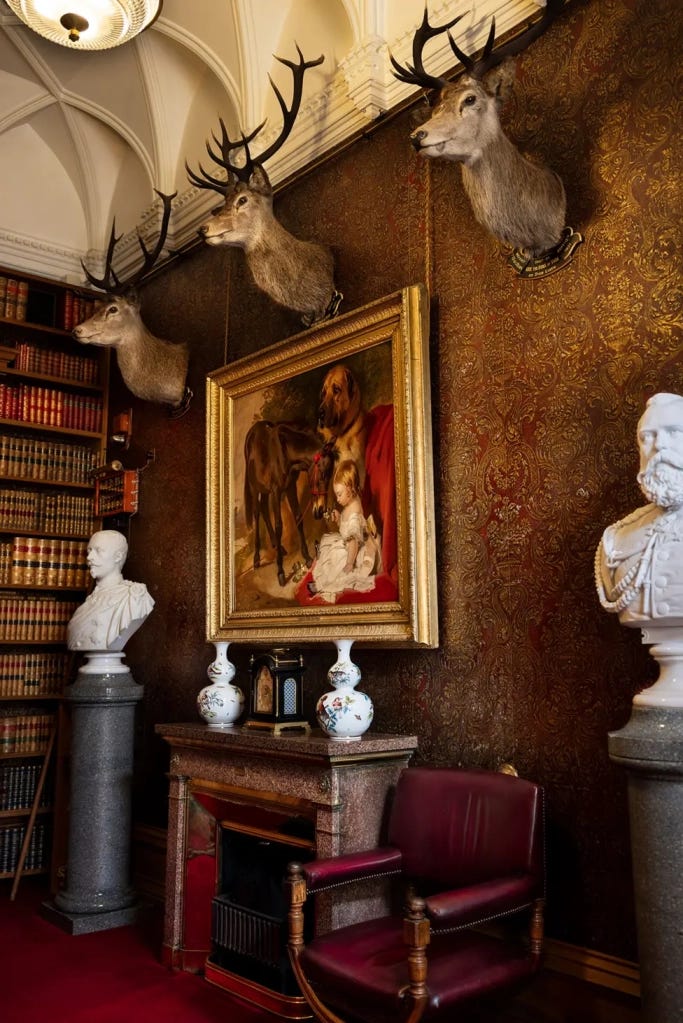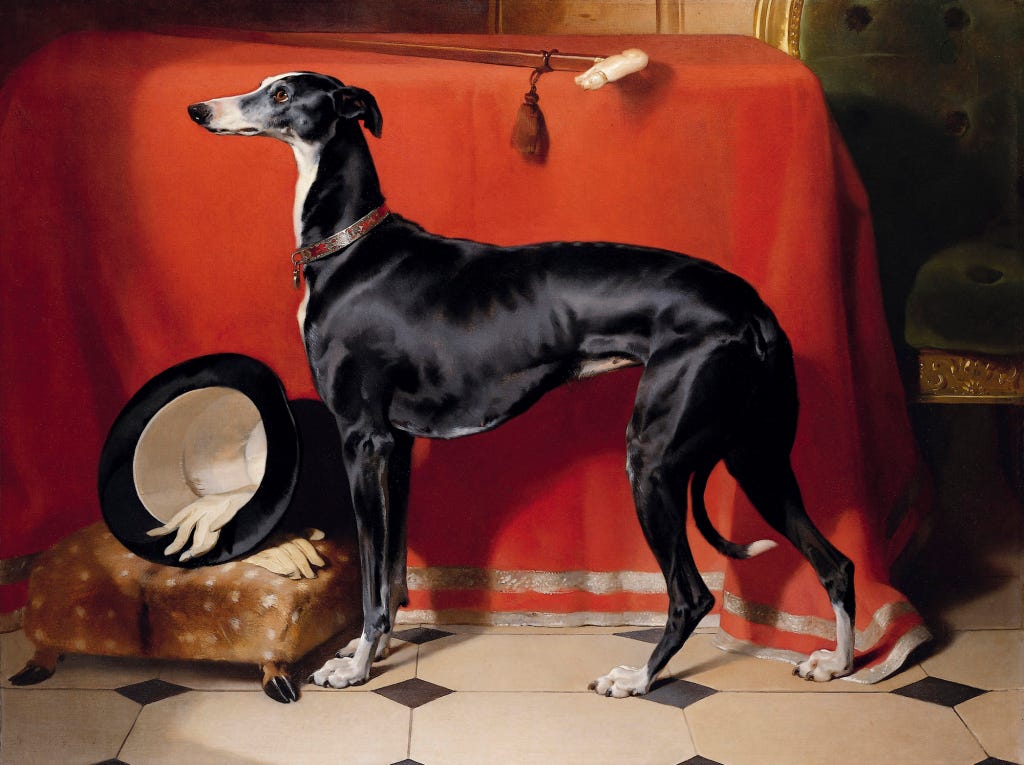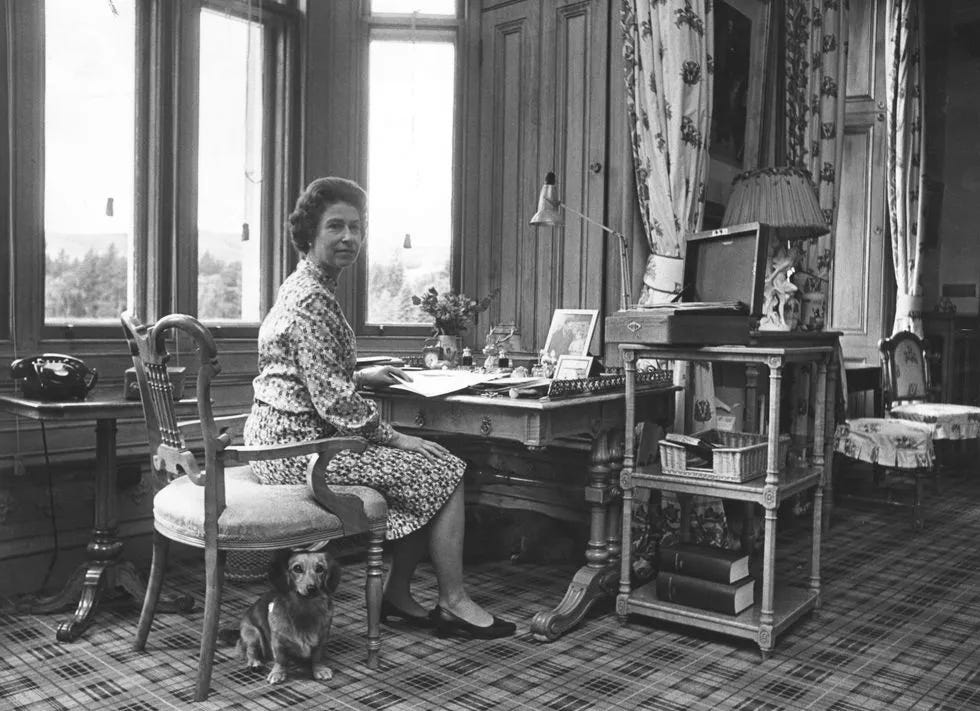Balmoral Castle: Interior Tour of the Royal Residence
Earlier this year I was fortunate enough to grab a ticket for the exclusive private tour of Balmoral Castle. Nestled in the heart of the Scottish Highlands, the castle is one of the most iconic royal residences known for its breathtaking scenery, rich history, and deep connection to the British monarchy. This year for the very first time, the public could purchase tickets and have a sneak peek within the beloved summer retreat of the British royal family. The interior tour offered a rare and unique opportunity to explore Balmoral’s majestic interiors, showcasing the elegant rooms, historical artefacts, and rich heritage that have made the castle a cherished royal residence for generations.
HISTORY
Balmoral Castle’s history dates to the 14th century when the estate was first recorded, however, its transformation into a royal residence began in the mid-19th century when Prince Albert, consort of Queen Victoria, acquired the estate in 1852. The existing castle on the site was deemed too small, leading to the construction of a new, larger structure that was completed in 1856. The design of the new Balmoral Castle, influenced by Scottish baronial architecture, reflects the romanticism of the era and Prince Albert’s personal taste.
Queen Victoria and Prince Albert’s fondness for Balmoral played a significant role in popularizing the Scottish Highlands as a desirable destination. The couple’s frequent visits and the Queen’s deep affection for the area were well documented, further cementing Balmoral’s status as a symbol of royal prestige.
FEATURES
Balmoral Castle is an excellent example of Scottish baronial architecture, characterised by its turreted towers, crenelated battlements, and distinctive stone facade. The design incorporates traditional Scottish elements, such as crow-stepped gables and dormer windows, blending them with the grandeur expected of a royal residence.
The estate itself spans approximately 50,000 acres, encompassing a diverse landscape that includes forests, lochs, and hills. This natural beauty adds to the castle’s charm and makes it a perfect retreat for the royal family, who enjoy outdoor activities like walking, fishing, and hunting.
READ MY ARTICLE ON ‘BALMORALISED INTERIOR DESIGN’ HERE
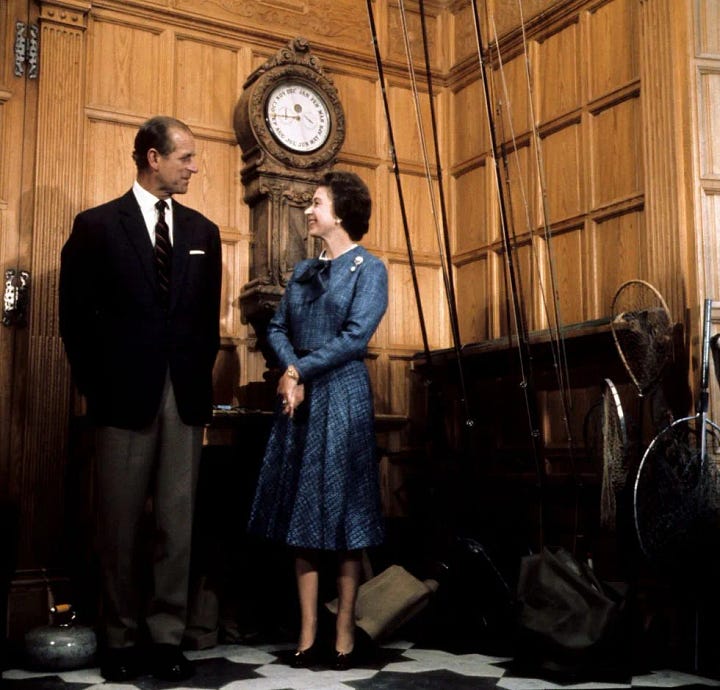

MODERN ERA
Today, Balmoral Castle remains a private residence of the British royal family, primarily used during the summer months. It is particularly associated with Queen Elizabeth II, who, like her great-great-grandmother Queen Victoria, held a deep affection for the estate. For the Queen, Balmoral was a place of relaxation, where she could escape the public eye and enjoy the tranquillity of the Highlands.
Although Balmoral is a private residence, parts of the estate and the castle grounds are open to the public at certain times of the year. Visitors can explore the gardens, the ballroom (normally, the only room in the castle open to the public), and various exhibitions that detail the estate’s history and its royal connections.
Balmoral Castle is more than just a royal home; it is a cultural icon. The association with the British monarchy has made it a symbol of continuity and tradition. The castle and surrounding estate have also played a role in the preservation of Scottish culture and heritage, from the maintenance of traditional Highland games to the conservation of native wildlife.
The castle’s place in popular culture is equally significant. Balmoral has been featured in numerous films, television shows, and literary works, often portrayed as a symbol of royal elegance and the idyllic beauty of the Scottish Highlands.
INTERIOR TOUR
The ‘closed door’ interior tour of Balmoral Castle was an exceptional experience that allowed a limited number of 10 guests to explore areas of the castle that are normally off-limits to the public. We were guided by an expert in royal history and treated to an in-depth exploration of the castle’s most iconic rooms, including the library, drawing room, corridor, dining room and castle entrance.
It was fascinating learning about the building’s historical significance as well as personal stories of the royal family members through the years who have called Balmoral home. The interior tour provided an intimate glimpse into the life of royalty, and there were a few design features that stood out to me:
KEY HIGHLIGHTS
Upon entering the castle, you are met with 22 stuffed stag heads that line the walls, including many with markings indicating they were shot by HRH Princess Elizabeth, prior to her becoming Queen.
Within the corridor there is an impressive life-sized rotating statue of Prince Albert. Our guide shared that after the prince’s death, Queen Victoria had staff turn the sculpture as she climbed the staircase every evening so she could see her beloved husband.
Along the hallway the walls are covered with flock wallpaper, commissioned by Queen Victoria in 1887, which features crowns, thistles, and the initials VRI – Victoria Regina Imperatrix. Interestingly, many of the other walls within the castle were quite plain and neutral.
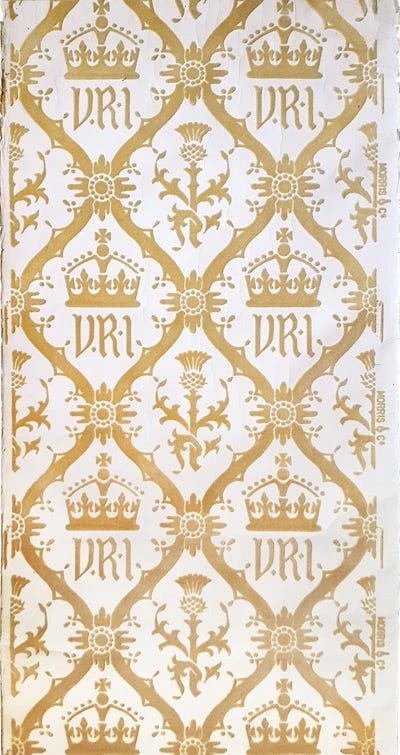
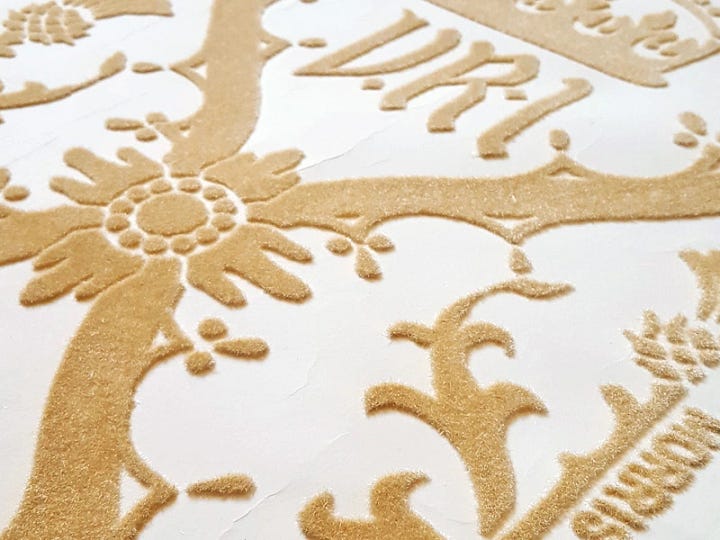
I was a little disappointed when entering the drawing room to see that it is no longer the iconic mint palette we see in the last public photo of the late Queen, as she confirmed Liz Truss as the new prime minister. However, the guide informed us the King Charles has redecorated this room and other spaces within the castle to reflect the original style from the Victorian era.
The library is surprisingly quite small with a homely feel and there is an overwhelming sense that this was a family home. It is said to be used by the King as his own working study, and there’s a wide variety of books, including Scottish history, highland clans, and the speeches of Prince Albert.
There are not many personal photographs within the interior, as far as I could see, apart from within the drawing room where on top of a grand piano there are a selection of framed photos, including King Charles and Queen Camilla, and the Queen Mother. Perhaps any private images were removed prior to the tour groups arriving. In fact, overall, the interior tour was far more insightful into Victoria and Albert’s history with Balmoral, rather than any information regarding modern royals.
It was particularly interesting to see some of the private artwork throughout the interior tour, including many pieces by Sir Edwin Landseer, a renowned British painter and sculptor. His work is closely associated with the romantic imagery of Scotland and British royalty. Landseer became particularly well-known for his paintings of deer, dogs, and horses, and he had a deep connection to Balmoral Castle, where many of his works were admired by Queen Victoria and Prince Albert. The royal couple commissioned several of his paintings for the castle, as they shared his love for the natural beauty of the Highlands.
One of these commissioned pieces is Eos, a famous painting by Sir Edwin Landseer, created in 1841. This piece is within the drawing room and features a striking portrayal of a greyhound named Eos, who belonged to Prince Albert. Eos was a highly treasured pet of the royal family, and Landseer’s portrait beautifully captures the elegance and grace of the dog.
In the painting, Eos is shown lying regally against a dark, velvety background, highlighting the dog’s sleek and refined form. The subdued tones and meticulous detail reflect Landseer’s skill in animal portraiture. Our guide shared that within the painting is Prince Alberts favourite hat, gloves and cane and as part of the interior tour this original cane was placed on a table underneath the painting for us to see.
Balmoral Castle is a jewel of the Scottish Highlands, embodying the rich history, architectural grandeur, and deep-seated traditions of the British monarchy. The picturesque setting, coupled with historical and cultural significance, makes it a unique and treasured part of the United Kingdom’s royal heritage. Whether viewed as a private retreat for the royal family or as a symbol of the enduring bond between Scotland and the British crown, Balmoral Castle continues to captivate the imagination of people around the world.




